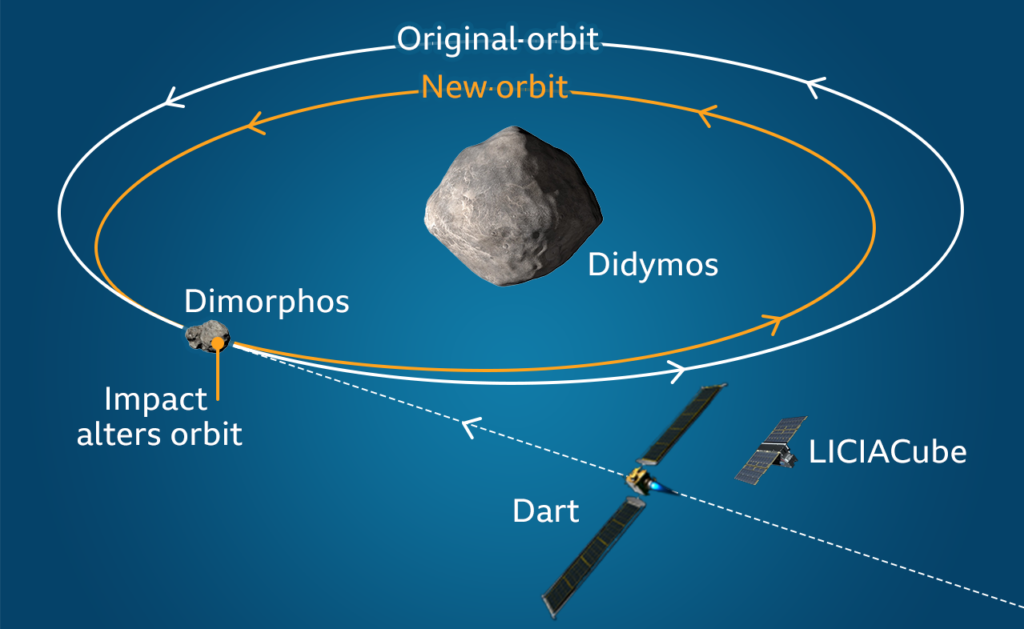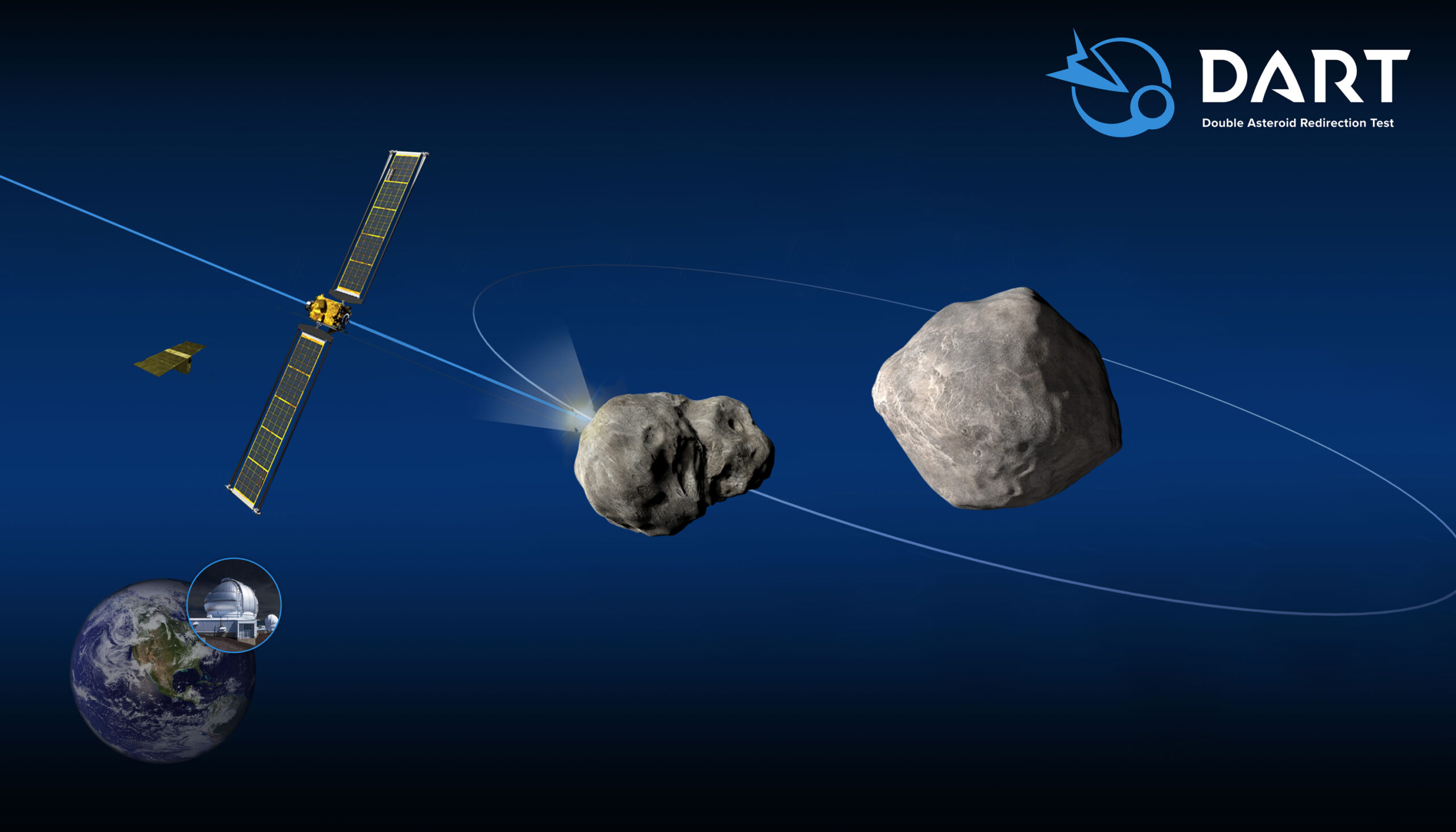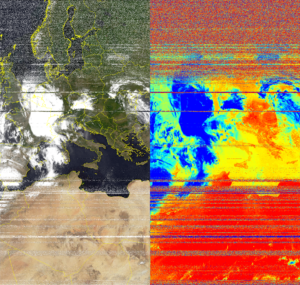DART (Double Asteroid Redirection Test) is a planetary defence project. It uses a smashing collision with an asteroid to alter its trajectory, and it will be the first demonstration of the kinetic impactor technique to change the course of an asteroid in space.
DART is a spacecraft designed to impact an asteroid as a test of the technology, as its target asteroid is NOT a threat to Earth. DART will only be changing the period of the orbit of Dimorphos (the “moonlet” of the asteroid Didymos) by a tiny amount. Still, this asteroid system is a perfect testing ground to see if intentionally crashing a spacecraft into an asteroid is an effective way to change its course in case an Earth-threatening asteroid is discovered in the future. While no known asteroid more prominent than 140 meters in size has a significant chance to hit Earth for the next 100 years, only about 40 per cent of those asteroids have been found as of October 2021.
The Launch and mission overview
On Wednesday, 24th November, a Falcon 9 rocket carrying the Dart spacecraft blasted off at 06:20 GMT from Vandenberg Space Force Base in California.
After separation from the launch vehicle, the DART spacecraft will intercept Didymos’ moonlet in late September 2022, when the Didymos system is within 11 million kilometers of Earth. The average distance from Earth will be 0.08 AU for several weeks around the time of the DART impact. Still, Didymos is bright enough for enabling observations by ground-based telescopes and planetary radar to measure the change in momentum imparted to the moonlet.
Didymos satellite orbits its primary with a period of 11.9 hours, with a semi-major axis of 1.1 km, and a nearly circular orbit. The primary has a diameter of 780 m, the secondary 160 m. The presence of a satellite has allowed the density of the primary to be estimated as 2.1 g/cm3 with ~30% uncertainty. The impact of the ~560 kg DART spacecraft at 6 km/s will produce a binary orbit period change greater than 7 min (assuming that the incident momentum from the impactor is simply transferred to the target without enhancement). This change in the binary orbit period can be measured within a week, given expected observing conditions.

Polimi’s contribution
About 10 days before Dart hits its target, the American spacecraft will deploy a small, Italian-built satellite called LiciaCube (Light Italian Cubesat for Imaging of Asteroids), the first European CubeSat vehicle to travel into deep space, far from the Earth. The 6U CubeSat (10x20x30cm) will be ejected from DART 10 days before impact with the Dimorphos asteroid. The LiciaCube will then continue in autonomous navigation, with the critical task of capturing images of DART and Dimorphos during the impact, of the crater and the fragments generated, enabling essential data to be gathered for the study of this small celestial body and to check the dynamics of the impact.
The Cubesat has seen contributions from researchers in the ASTRA Research group, Professor Michèle Lavagna, Andrea Capannolo and Giovanni Zanotti, from the Department of Aerospace Science and Technology (DAER) at Politecnico di Milano. They were responsible for designing the ejection trajectory and manoeuvring profile to ensure a correct approach to the celestial body and recording the cloud of fragments without putting this small satellite at the risk of collision.
After the deployment, LiciaCube will perform a fly-by around the asteroid system to reach an approximate distance of 50 Km from Dydimos, an optimal length to gather data about the impact and the debris generated after the collision. The images will be acquired through two onboard cameras, LUKE (LICIACube Unit Key Explorer) and LEIA (LICIACube Explorer Imaging for Asteroid). The communication system will then send all the data acquired to the Earth. Dimorphos blocks some of Didymos’ reflected light as it passes in front, while the opposite occurs when the smaller object moves behind its bigger companion, so we can measure the frequency of those dimmings and calculate the new period the moonlet around the main asteroid to evaluate the change due to the impact of the DART spacecraft.
Follow the mission
Remember to stay up to date on the mission, as it is the starting point for all future missions dedicated to the planetary defence and monitoring of all Near-Earth Objects which can be potentially dangerous for our planet.
More information about the mission here: https://www.nasa.gov/planetarydefense/dart
Watch the livestream of the launch here: https://www.youtube.com/watch?v=E0OUvEh3HWk







